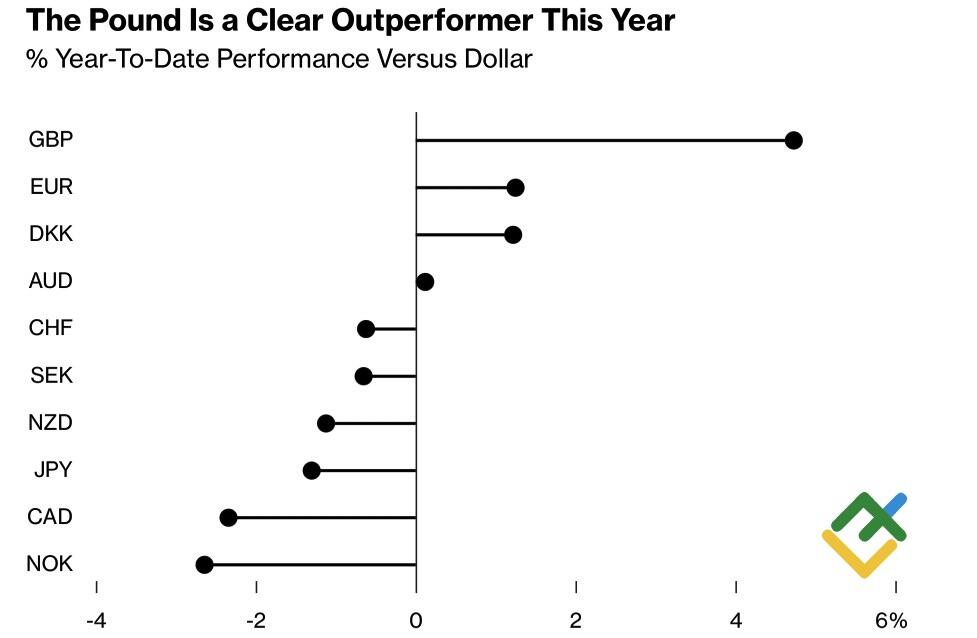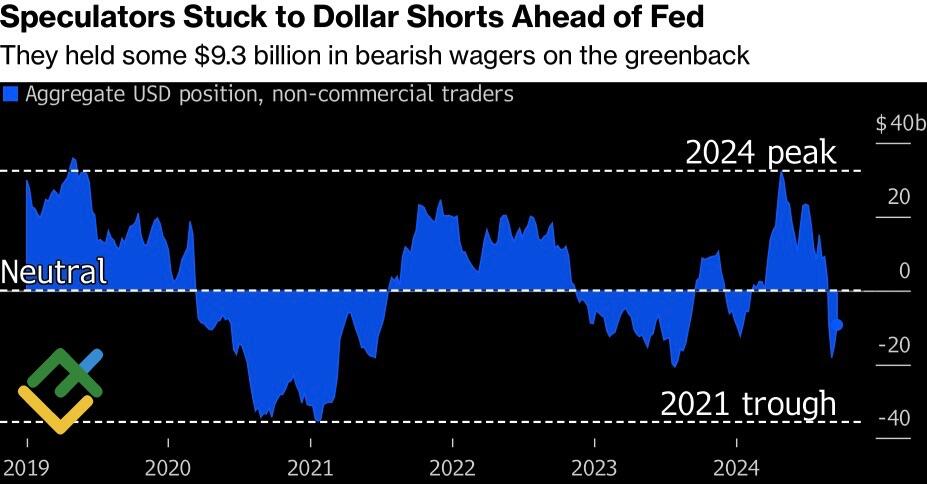
The rapid GDP growth in the UK and the slow pace of the Bank of England’s monetary policy allow traders to buy the GBPUSD pair. In addition, carry traders are providing support to the British pound. Let’s discuss these topics and make a trading plan.
The article covers the following subjects:
Highlights and key points
- The OECD has significantly raised its GDP growth forecasts for the UK economy.
- The Bank of England intends to reduce the repo rate slowly.
- The use of the British pound in carry trade will benefit the currency.
- The GBPUSD pair continues to move towards 1.35 and 1.37.
Weekly fundamental forecast for pound sterling
The OECD has revised its assessment of the UK’s economic health, no longer categorizing it as the weakest performer in the G7. The organization has revised its GDP growth forecast for the UK from 0.4% to 1.1% in 2024 and from 1% to 1.2% in 2025. The rapid expansion of the economy in the first half of the year prompted a revision of the views, becoming one of the main drivers of the GBPUSD, which has soared by almost 5% since the beginning of the year. The pound is currently in the lead in the G10 currencies race and is unlikely to be surpassed until the end of 2024.
G10 currencies’ performance
Source: Bloomberg.
The combination of impressive GDP growth and the Bank of England’s sluggishness presents asset managers and hedge funds with an opportunity to actively buy the pound sterling. Long positions on the British pound against the US dollar, Swiss franc, and euro are currently the most popular trades in the foreign exchange market, according to Nomura. Even a slowdown in UK business activity in September did not hamper the GBPUSD from climbing to its highest level in almost three years. Since the market panic over the Liz Truss government’s budget in the fall of 2022, the pair has risen by a stunning 30%.
Speculative positions on British pound
Source: Bloomberg.
Drafting major financial plans represents a significant challenge for the pound sterling. On October 30, the Labour government will present a new budget, and market analysts are concerned that the proposed tax increases may have an adverse impact on economic growth. However, according to Prime Minister Keir Starmer, the path to a better quality of life entails making compromises in the short term.
There is still a considerable amount of time until the end of next month, and GBPUSD bulls are benefiting from discrepancies in economic growth and convergence in monetary policy. Andrew Bailey has emphasized the importance of maintaining low inflation, suggesting that the Bank of England exercise caution in this regard. This is particularly relevant given that the OECD anticipates that consumer prices in the UK will be the highest among the G7 countries. The rate is expected to accelerate to 2.7% by the end of 2024 and 2.4% by the end of 2025.
It appears that the Bank of England is still far from achieving its inflation targets. The derivatives market expects that the repo rate will decline by a mere 40 basis points by the end of the year. By May 2025, borrowing costs will likely decrease by 100 basis points. The expectations reflect that the federal funds rate will decline by the same amount as early as January. The differing pace of monetary policy easing provides the GBPUSD bulls a reason for optimism.
The pound may benefit from carry trades on the GBPJPY pair. The Bank of Japan’s gradual approach may result in the yen returning to its role as a funding currency in carry trade transactions. High interest rates will make the pound sterling an attractive instrument for placing funds.
Weekly trading plan for GBPUSD
In the absence of a renewed surge in US inflation, the GBPUSD currency pair will continue to increase, approaching the previously established long-term targets of 1.35 and 1.37. Against this backdrop, pullbacks present an opportunity to open long positions.
Price chart of GBPUSD in real time mode
The content of this article reflects the author’s opinion and does not necessarily reflect the official position of LiteFinance. The material published on this page is provided for informational purposes only and should not be considered as the provision of investment advice for the purposes of Directive 2004/39/EC.
{{value}} ( {{count}} {{title}} )
This post is originally published on LITEFINANCE.





